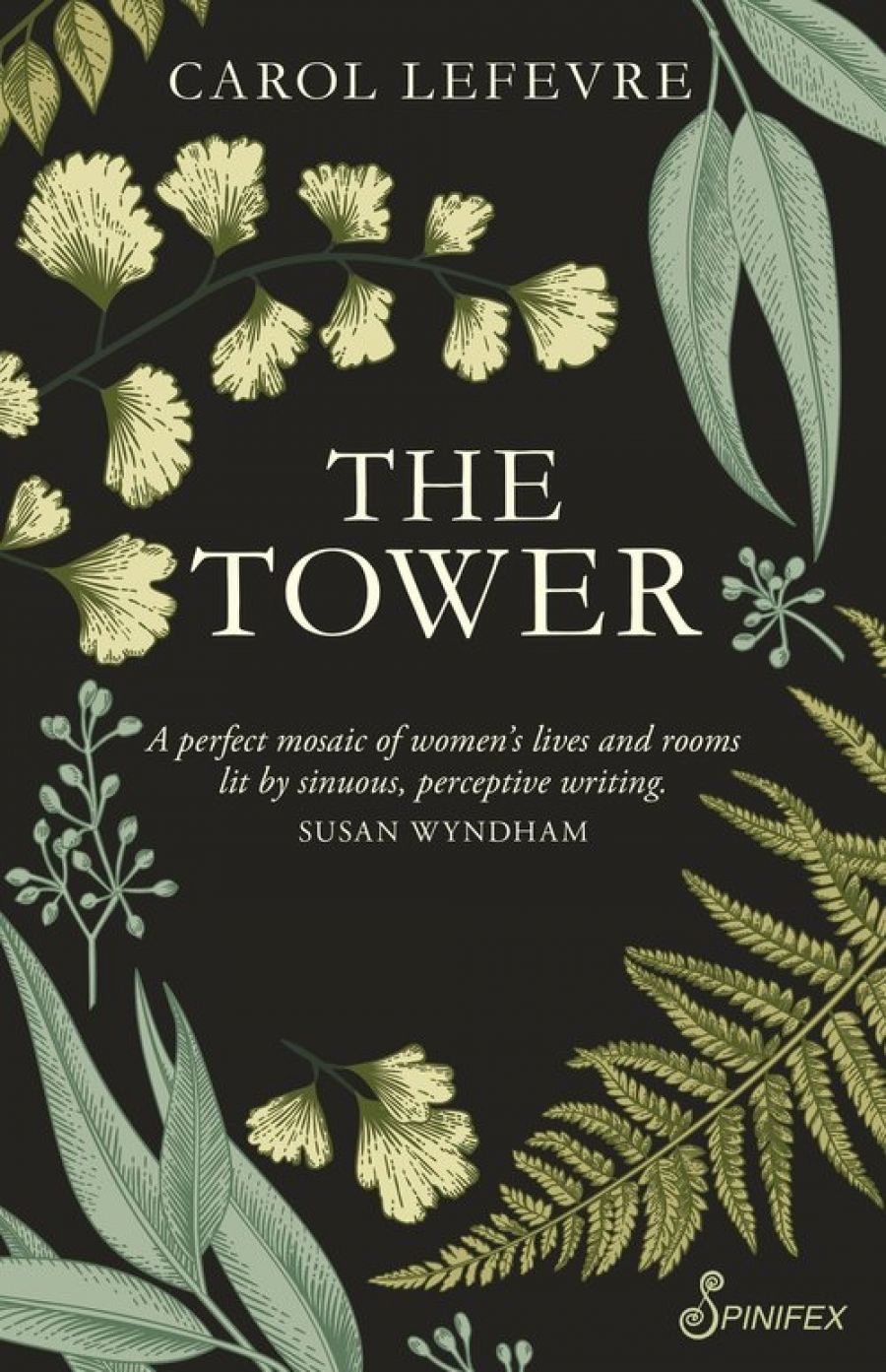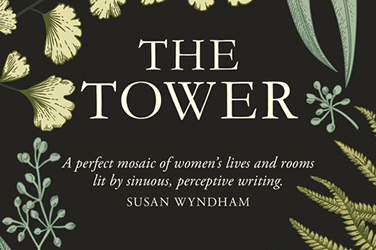
- Free Article: No
- Contents Category: Fiction
- Review Article: Yes
- Article Title: Life versus art
- Article Subtitle: The joys and constraints of artistic freedom
- Online Only: No
- Custom Highlight Text:
Admirers of Carol Lefevre’s earlier books, and nostalgists in general, will delight in her latest offering. Her artistic eye evokes the patina of a silvering vintage mirror reflecting societal and literary traditions. Both in tone and preoccupations, The Tower (Lefevre’s sixth book) continues traditions cast in several Australian literary classics. Familiar, too, is Lefevre’s favoured form. Several of the book’s chapters have previously been published as short stories, but Lefevre has worked them seamlessly into this novel’s overarching chronicle.
- Featured Image (400px * 250px):

- Alt Tag (Featured Image): Charle Malcyon reviews 'The Tower' by Carol Lefevre
- Book 1 Title: The Tower
- Book 1 Biblio: Spinifex Press, $32.95 pb, 250 pp
- Book 1 Readings Link: https://www.booktopia.com.au/the-tower-carol-lefevre/book/9781925950625.html
Within her Tower’s hallowed space, Dorelia rewrites fictional women’s stories, recasting the evil witches and stepmothers of fairy tales as sympathetic heroines, echoing hers and Bunty’s own journeys. This is a book of stories within stories. Its characters revolve around one another, constellating like stars across the Milky Way, individuals comprising the whole. Form follows function, mirrors story. In this, structurally, Lefevre’s work echoes Amanda Lohrey’s Labyrinth.
Character archetypes and scenes recur in different times and places, all resolving to the same central image. While key figures remain ever-present, different facets of their experiences are presented through shifting points of view. This skill, learned from Woolf and perfected here, is perhaps best shown in Chapter Eight, ‘Life Support’ – previously published in Westerly – where perspective passes seamlessly from young Jesse to his mother Freddie. Jesse, a side character, is also one of the most clearly drawn in the book, and perhaps my favourite.
He and other bit-part characters, Dave Letlow for instance, offer contrast by way of reflective foils. In Chapter Sixteen, ‘Dream Street’, Dave dons items of his late wife Dot’s clothing for comfort. These side characters highlight other aspects of the central females’ lives that can only revealed by looking slant. It’s a skill cultivated by an eye educated in visual art, as one might expect from an author permanently fascinated by women painters.
The importance of art, and artists, and the right to create, is a persistent theme of Lefevre’s, exemplified here in Chapter Two by Aunt Nance, who insists on sending her niece, Marial, to art school. Another fixation is homelessness. Several women across many stories, both in this and other of Lefevre’s novels, are forced from their homes, often because of domestic abuse, but sometimes because of the financial inequality of the female condition. Turning to friendships they have formed through art, they arrive on doorsteps begging for shelter. It is always offered, regardless of how tenuous the relationship.
Other patrons and family archetypes also recur – typically, fathers who refuse to allow their daughters to study the arts for fear it will limit their future prospects; here, in both Dorelia’s and Marial’s fathers. Over and again, they have doors opened by the generosity of female relatives – godmothers and aunts, usually single.
These reprisals could seem repetitive, but Lefevre reminds me of a painter reworking the same scene, striving to capture it in different lights, giving deep focus to subjects that deserve ongoing attention. Yet, while the familiarity of these vignettes is part of the novel’s charm, it is also its challenge. There is strength in examining the domesticity-versus-art conundrum but leaning into these tropes can make the characters feel less real, casting them as models rather than individually nuanced personalities. When the book’s structure becomes increasingly complex and intertwined, the lack of distinct character attributes and temporal markers can make it hard to keep track of the period or town in which the story is situated.
At the same time, such blurring prompts the reader to stay alert and adds to the pull of the book’s great riddle. While there is a small-town mystery at the heart of the novel, the real challenge is piecing together the relationships and connections across its many stories. That a linking thread is constant, if at times barely visible, offers immense satisfaction in the end. It is what elevates this work to a truly accomplished novel, even while offering the discrete gems of small stories within.


Comments powered by CComment